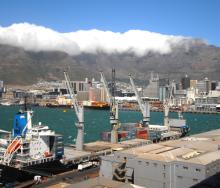Significant trade growth in South Africa’s agricultural industry, which posted a record $13.7 billion in 2024, up 3% year-on-year, points to a resilient industry withno direct policy threats.
That’s the view of chief economist of the Agricultural Business Chamber of South Africa,Wandile Sihlobo, who points out that the challenges the sector faced in 2024 were environmental and animal health in nature, not political, as is the case at the start of 2025.
“We faced the mid-summer drought that weighed negatively on grain production and the foot and mouth disease in cattle.
“Still, the robust harvest of fruit, combined with the recovery in livestock and the better stocks of grains from the previous season, supported South African agricultural export growth in 2024.”
The record high of $13.7bn, which is based on data from Trade Map, reflects both an increase in the volume of agricultural exports and higher prices of some products, says Sihlobo.
And while logistics infrastructure efficiency remains a primary concern for the farming sector, he believes the ongoing collaboration between Transnet, private industry, and the various logistical organisations is helping to ensure the continuous flow of products, even if there are delays in specific periods.
The top exported products by value include citrus, grapes, maize, apples and pears, wine, nuts, fruit juices, sugar, berries, dates, pineapples, avocados, wool, apricots and peaches, ciders and beef, amongst other products.
From a regional perspective, the African continent maintained the lion's share of South Africa's agricultural exports in 2024, accounting for 44% of the total value, while Asia and the Middle East were the second-largest agricultural markets, accounting for 21%. The EU was South Africa's third-largest market, with a share of 19%. The Americas region accounted for 6%.
Sihlobo points out that given ongoing concerns about South Africa's participation in the Agoa (Africa Growth and Opportunity Act) trade arrangement, it is worth looking at South Africa's agricultural exports to the US, which are only 4% (which is part of the 6% exports to the Americas region mention above).
“Still, this is not to minimise their value, as few specific industries are primarily involved in these agricultural exports to the US. These are mainly citrus, grapes, wine and fruit juices. Since the start of Agoa, the percentage share of South Africa's agricultural exports to the US has remained at these levels.
“If South Africa were excluded from Agoa, the country would face an average import duty of about 3% (at the Most Favoured Nations Rate). This underscores the fact that Agoa mainly offers price competitiveness to the products South Africa exports to the US. The 3% tariff would give an advantage to other competitors that access the US market duty-free (as South Africa currently does under the Agoa).”
In the current environment of heightened geopolitical tension, Sihlobo warns that South Africa's export-oriented agricultural sector must work to maintain current export markets and broaden to new markets in the EU, the African continent, Asia, the Middle East, and the Americas.
He says the relevant government departments should lead the way for export expansion and the search for new markets. South Africa should expand market access to some key Brics countries, such as China, India, Saudi Arabia and Egypt.
A continued focus on improving logistical efficiency is also imperative, he adds.













